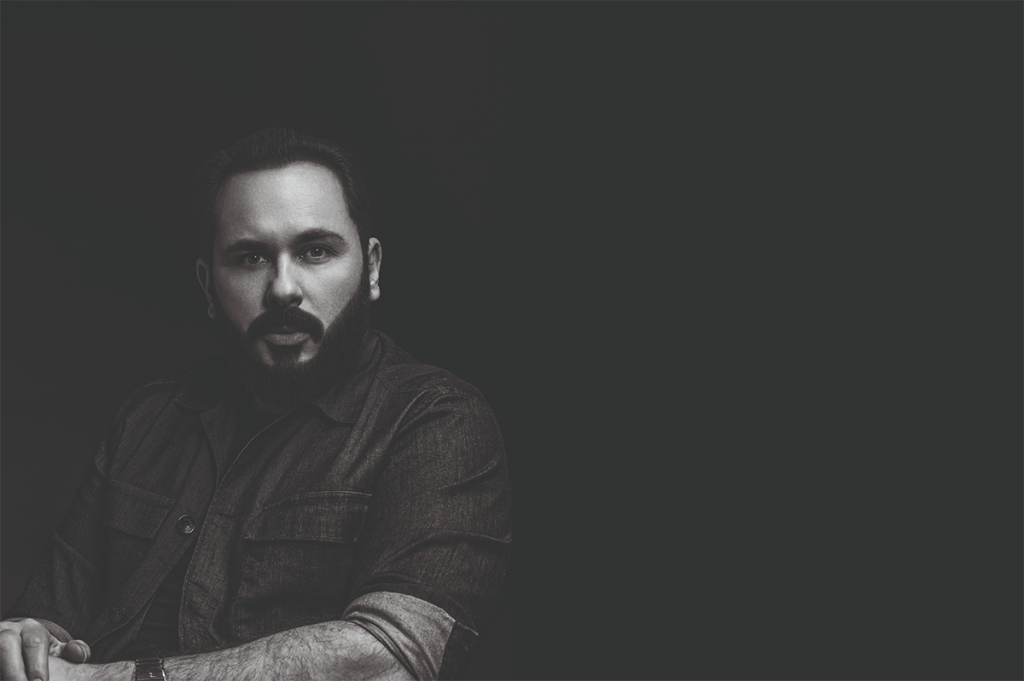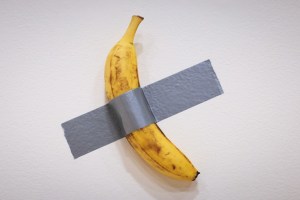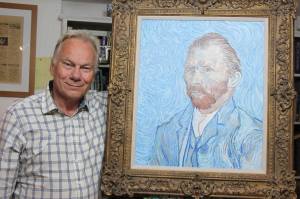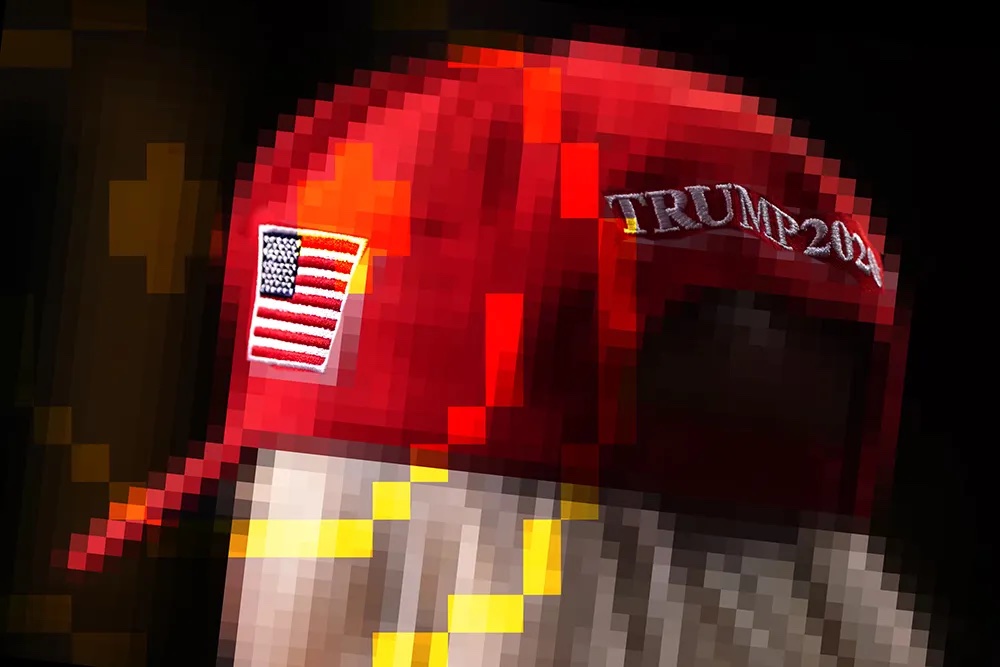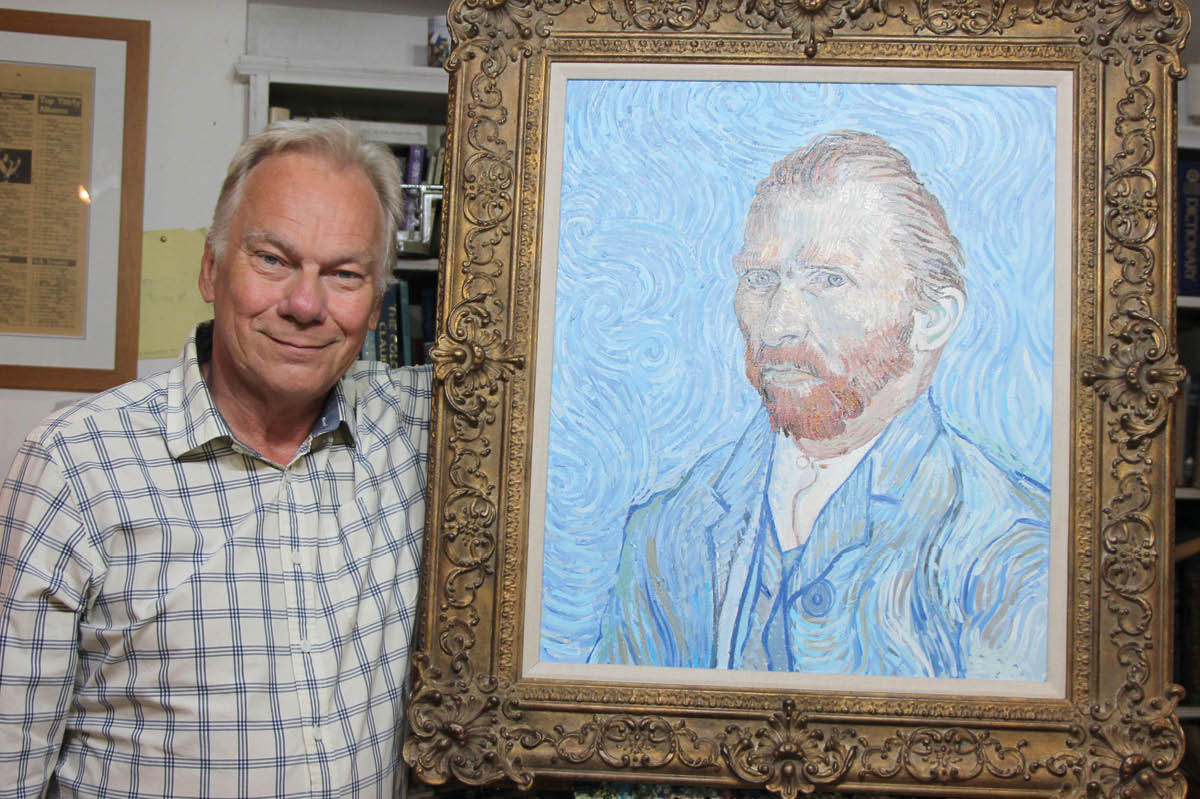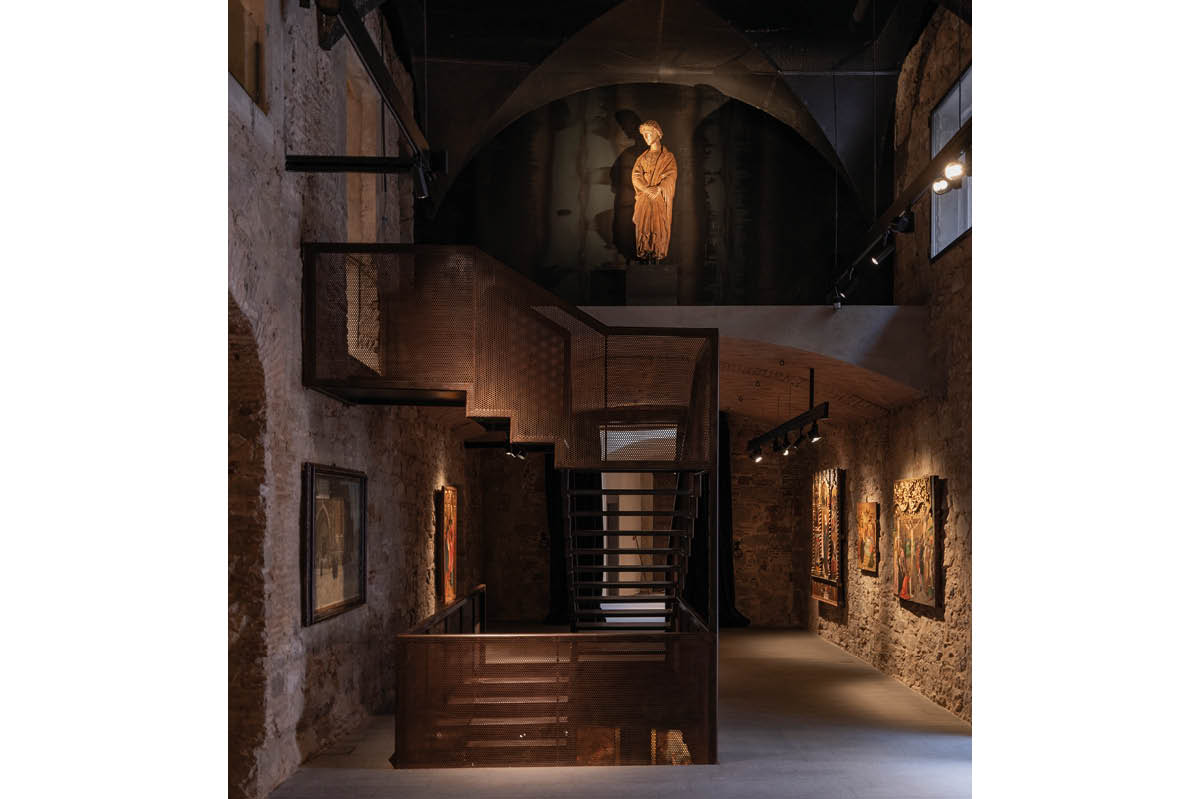St. Paul points out that “all have sinned and fall short of the glory of God.” Despite that inclusive “all,” human nature inclines toward exclusion of the “other,” which is a very difficult thing for many of us to overcome — me included. Enter Greg Lansky, pornographic-film producer. Perhaps no one in recent memory has made a greater profit from the highly lucrative commerce paradoxically known as “adult entertainment” than Parisian-born entrepreneur Lansky. Within the span of about fifteen years, he went from dropping out of school and having few realistic prospects to making fortunes from adult media, partying with celebrities and receiving glowing profiles in magazines such as Forbes, GQ and Rolling Stone. Shortly before the pandemic hit, however, Lansky left Tinseltown, selling off his media company to pursue other opportunities. To the surprise of many, he has recently reemerged.
Enter Greg Lansky, artist. I had never heard of him until November 2022, when one of his sculptures caused something of an uproar on social media. “Algorithmic Beauty” is a six-foot, eight-inch Carrara marble nude of a woman holding up a mobile phone. Her body is covered in plastic-surgery scars, cellulite ripples across her posterior, as she juts one hip provocatively, with drapery falling from her waist — an intentional reference to the “Venus de Milo.”
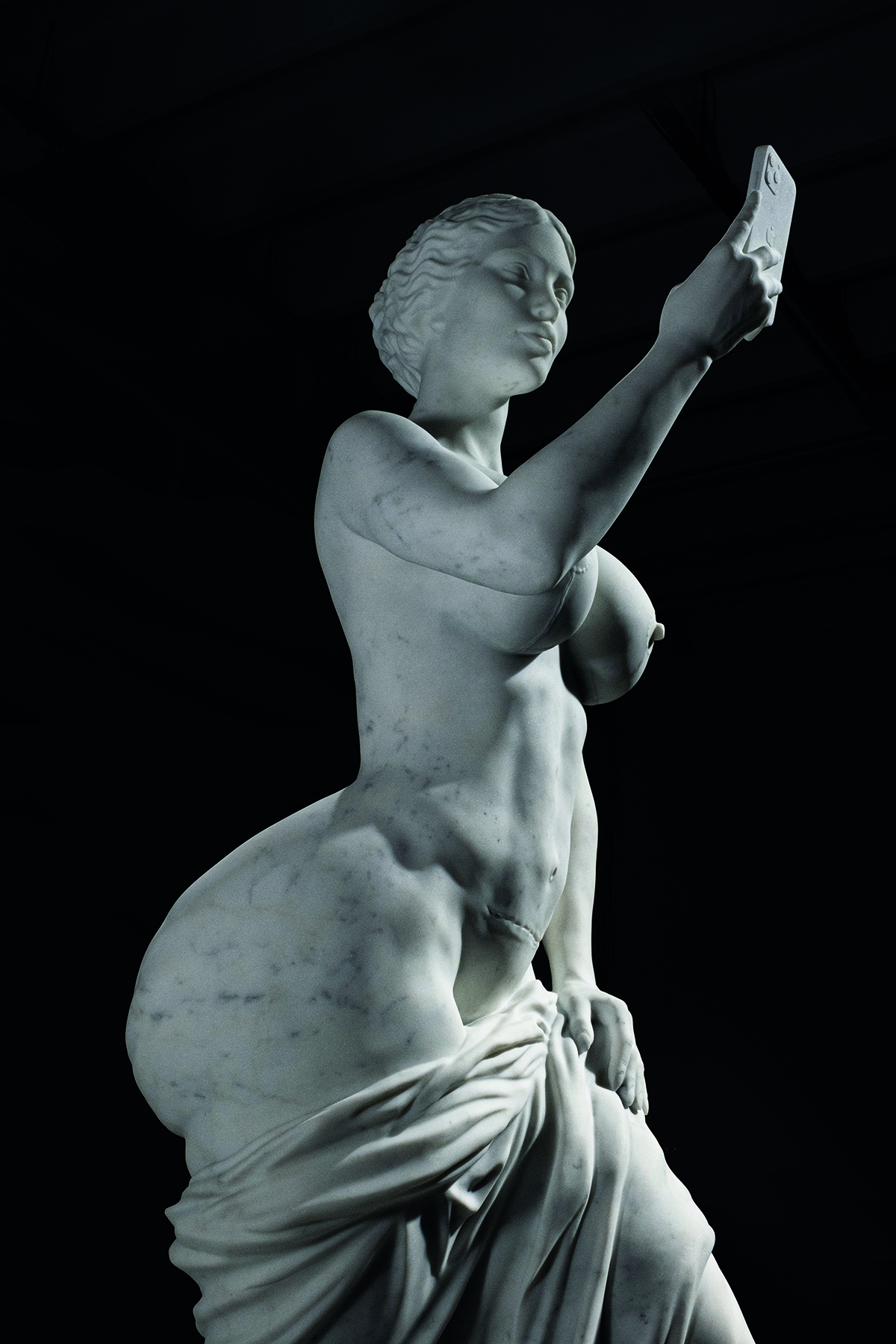
In his accompanying statement, Lansky questions what would make someone go through the degree of physical suffering necessary to achieve such a form: “How much pain would you take to feel loved?” he asks. “I created this work reflecting on the relationship between pain and feeling loved in a world driven by AI algorithms. There is no mirror for her selfie because humanity is the mirror. We are all the mirror.”
In addressing his goddess’s visible flaws, Lansky compares them to battle scars from an endless war. He questions a world in which those who embrace such constant remaking “will be rewarded by digital engagement disguised as love,” and that the painful procedures they pursue allow them to “participate in a world of lies,” Lansky seemed to be arguing that those who are constantly seeking these ultimately unobtainable standards of perfection do so just because they want to be loved.
The unveiling of “Algorithmic Beauty” led to a furor of criticism on Reddit and TikTok. Feminist commentators assessed its invitation of the “male gaze” — a term coined by a man — that is, the reduction of female beauty to sexual objectification. Then devotees of Kim Kardashian rushed to the defense of their idol, many assuming that certain aspects of the sculpture, such as its surgical scars, were meant as a negative reflection on her constant self-remaking.
The art world remained largely silent about this fracas. One major art institution I contacted flatly declined to comment, because they do not currently have any of Lansky’s pieces in their collection. And tracking down Lansky himself to talk about “Algorithmic Beauty” was no easy matter. For someone who had been in the spotlight for years, and had just launched a highly visible remaking of his own, Lansky was strangely unavailable.
A visit to Lansky’s official website returned a gray screen bearing nothing other than the message: “Comments on this post have been limited.” Facebook revealed practically nothing, while Twitter turned out to be a dead end as well, since Lansky’s account is protected. His Instagram account, which has been wiped clean of whatever was on it before he shifted to making art, includes an email address, but my messages went unanswered, as did my direct messages to Lansky’s Instagram, at first.
“I usually decline most interview requests,” he explained once contact was finally established. “In my previous career, Greg Lansky was essentially a living art piece: performance art of what people expected a porn producer to be. Now, I want to step back a bit more, and let the art speak for itself.”
Lansky himself is not at all what one might expect. He’s thoughtful, observant, curious about the world, a voracious reader, fascinated by new technologies and in possession of a sharp wit. He would have had a brilliant career as a courtier under Louis XV. He’s also very much aware of the criticism that “Algorithmic Beauty” engendered from certain quarters, while he has received praise for it from others.
“All of my art is through ‘the male gaze,’” he admits. “As a man, that’s the perspective I have on the world. But it’s not about sexualization and objectification — there’s so much love and appreciation in my work too. Ignoring these nuances would be a disservice to the complexity and depth of this piece.
“‘Algorithmic Beauty’ is about love and the pursuit of it in the digital age. I think this controversy showcases the reality of what women who have undergone plastic surgery often face. On top of being judged by men, they are also attacked by women, because they are seen as complicit in trying to meet men’s ideal beauty standards.”
Lansky finds the scars and pain suffered by those who go through cosmetic surgery beautiful. “They move me,” he remarks, “because I would not have the courage to go through that myself. I’m not preaching, and I’m certainly in no place to judge, but I will be a witness of my time through my art. And as a witness, I recognize that my perspective is limited… I don’t pretend to know what it’s like to be a woman with plastic surgery, but I can try to have an awkward yet genuine attempt at empathy.”
Lansky rejects the assertions of those who claim “Algorithmic Beauty” is a mean-spirited caricature of a specific individual. Creating the sculpture involved digital scanning of multiple models, real women who had undergone plastic surgery, but not Kim Kardashian. “I have nothing but love for Kim Kardashian,” he avers. “If Michelangelo and Da Vinci were alive today, they’d be making art about her.” While I don’t know if I would go that far, Lansky has a point. As any student of art history knows, over the centuries famous beauties in places like Florence, Paris or Rome appeared again and again in works of art because they embodied the aesthetics of their times.
So far only a few of Lansky’s pieces have been revealed to the public — “Algorithmic Beauty” being the most talked about — but his working method sounds remarkably like that of his predecessors, just with new tools. Like many of his artistic antecedents, who could produce everything from paintings and sculpture to buildings and decorative objects, Lansky is not purely a sculptor. “I enjoy working in a variety of mediums,” he says. “I choose the medium that will best serve my vision, which varies from project to project.” As in the old studio system, Lansky is there to come up with the concept, and then oversee the work. “Just like a movie director or an architect,” he explains, “I bring together a team of skilled professionals to bring my vision to life. To me, art is about the idea.” In this respect he has much in common with certain other contemporary artists, such as Damien Hirst and Jeff Koons, and just like them, sometimes Lansky nails it, and other times he does not.
One of Lansky’s first major works, “No End in Sight” (2022), is a giant peace sign made from hundreds of (fake) handguns. It’s big and powerful and, frankly, it just looks neat. You can’t ignore it if it’s in the room. However, it could also be observed that it displays a somewhat facile understanding of its subject matter.
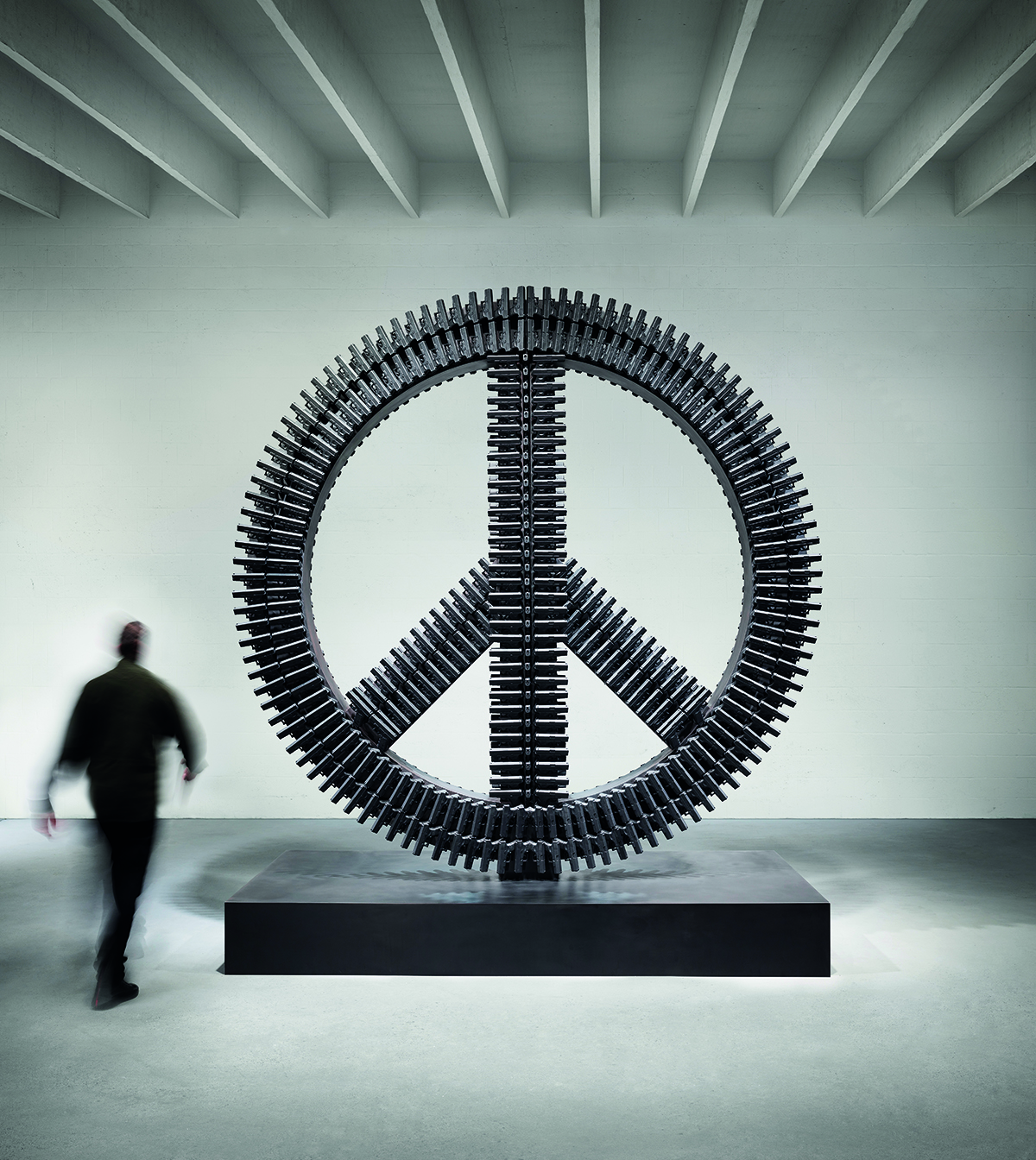
On the other hand, “You’re Next” (2022), in which a working stainless-steel guillotine bears a blade emblazoned with the Twitter bluebird, is both very cool and spot-on. In it, Lansky cleverly captures the essence of what social media networks have become: a place for crowds to cheer and jeer as they destroy the lives of people they do not know, while simultaneously hoping that they themselves will not be marched to the scaffold. “Justified or not, no one benefits more from these online executions than the social media platforms,” Lansky wrote about this piece on Instagram. “Even the Greeks,” he noted, “could not invent a tragedy where the audience does not realize that their pain and suffering is actually the spectacle they paid for.”
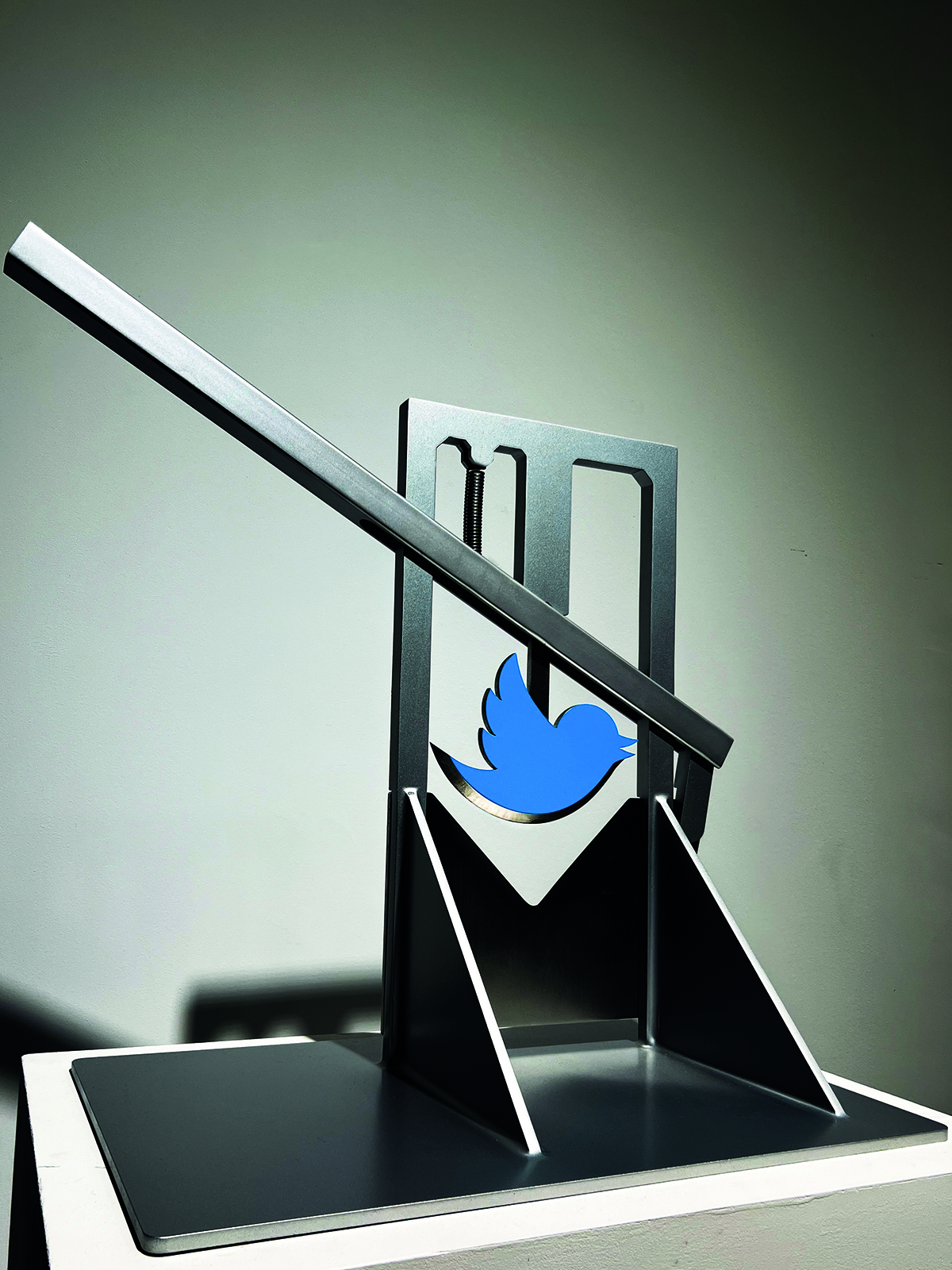
Far more striking and perhaps more telling is “Still Lost, Still Scared” (2022), Lansky’s best and most compelling piece to date, in which an anthropomorphized golden calf holds aloft a highly coveted Supreme T-shirt. Referring to the story from Exodus in his accompanying statement, Lansky notes that idolizing materialism in his own life never brought him happiness, and that people today are “in an almost tragic way looking for our deepest spiritual desires in the shallowest parts of our world.” Here I think, perhaps more than in any of his other pieces to date, is a key to understanding at least part of what makes Lansky tick.
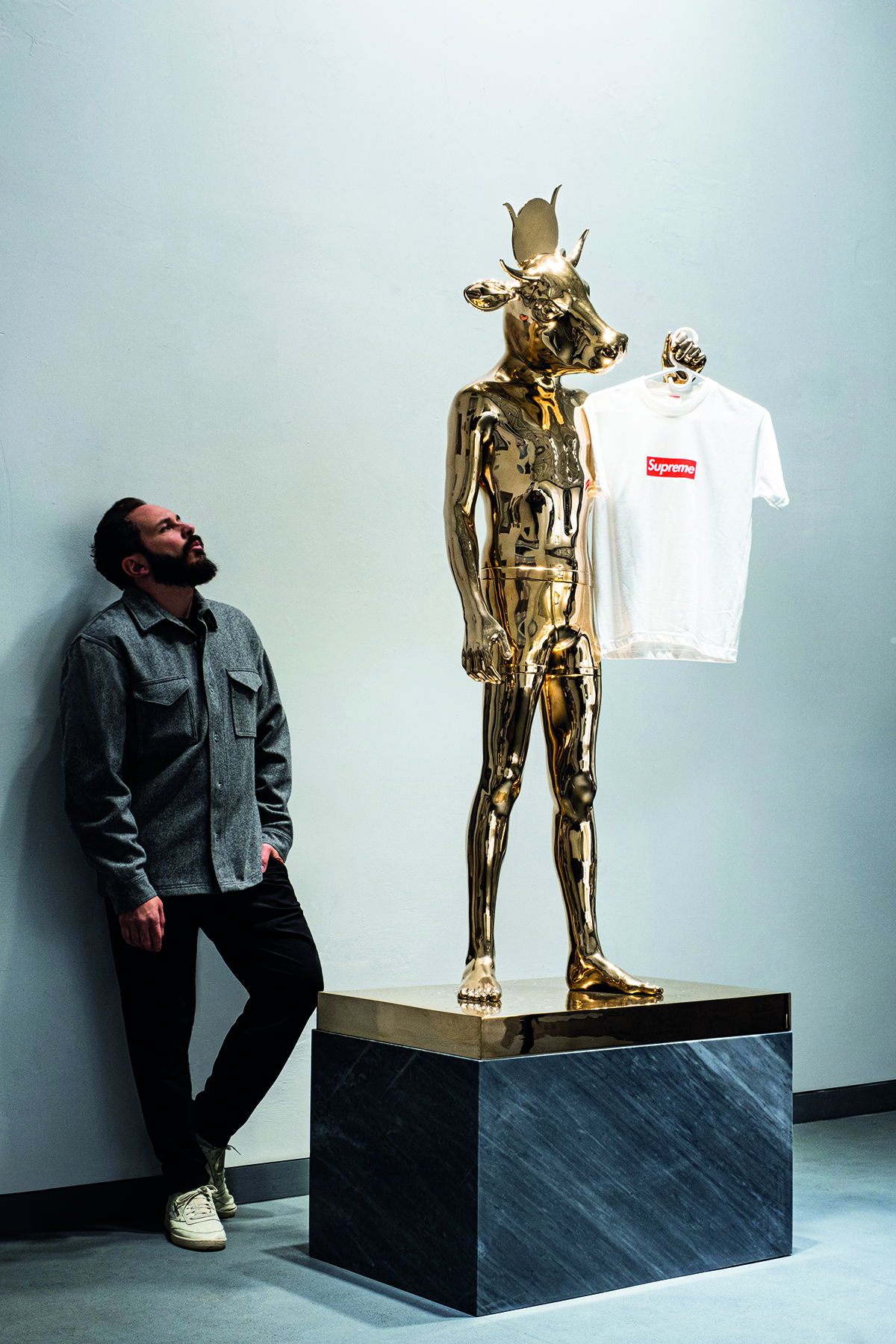
With this piece, Lansky is questioning not only society but himself. “It’s almost like humans’ strong desire to worship is often misdirected,” he tells me, “So we end up worshipping false idols. I know I have. I wanted to ask the viewer about what worship is, and what happens when our need to worship latches onto the wrong kinds of objects.”
“I feel a sense of compassion for this group of people who decided to make a golden calf to fill a void,” he says. “It made me think about the concept that we become what we worship, so I created an updated golden calf that has now merged with a human form. It has the body of a young person with still weak legs that can barely support its own weight: the weight and responsibility of being human. The part-calf, part-human form is the worst of both worlds, neither fully human, nor fully idol — perhaps a representation of the unfulfilled state of being created, when we allow ourselves to pursue idols and superficial status instead of faith.”
Lansky goes on to observe how the pursuit of luxury goods, such as the designer T-shirt held aloft by what one might refer to as Golden Calf 2.0, is done out of a desire to find self-confidence and love — including, at times, by people who cannot realistically afford to pursue such luxuries. “I’ve done this,” he admits, “we become what we worship. And so, when we worship empty, essentially valueless idols, it’s no wonder that so many of us feel an emptiness inside.”
Curiously, Lansky’s thoughts on “Still Lost, Still Scared” have an unexpected kinship with those of then-Cardinal Joseph Ratzinger (later Pope Benedict XVI). In his book The Spirit of the Liturgy, Ratzinger explains how the creation and worship of the Golden Calf by the Israelites, at a moment when they are feeling alone and vulnerable, create what he terms “a festival of self-affirmation.” By worshipping themselves through feasting and abandon, they engage in “a kind of banal self-gratification.”
Just as Lansky observes how his worship and pursuit of material things never really brought him happiness or filled the spiritual hole in his life, Ratzinger notes that the Golden Calf serves as “a warning about any kind of self-initiated and self-seeking worship. Ultimately, it is no longer concerned with God, but with giving oneself a nice little alternative world, manufactured from one’s own resources… All that is left in the end is frustration, a feeling of emptiness.”
It’s remarkable that such very different figures would end up reaching the same conclusion about the grasping materialism that brings out the worst in us. For years, Lansky profited off the broken aspects of our society — never finding love or spirituality — which is perhaps why he’s become such an astute commentator on its frigid commercialism and emptiness.
At the time of our interview in December, Lansky told me he was finishing up a new piece titled “The Stoning of St. Stephen.” He noted how artists from Raphael to Rembrandt to Vasari had explored the story of St. Stephen, the first Christian martyr, and that he felt compelled to do so himself. “This Biblical moment has a profound meaning for me,” he explains, “because of how it echoes in our current culture, led by digital groupthink without a path to redemption.”
Lansky also plans to hold a major exhibition in September featuring several new pieces, including some interactive ones that will draw in the viewer. In his previous works, Lansky put in a great deal of thought and reflection on himself and his world. Yet the result is neither narcissistic nor distant, but deeply human. “I’m after a feeling,” he explains. “My ideas originate from a need to capture feelings that often are too conflicting and complex to be described by words.”
Even while he is busy creating new works of art and planning exhibitions that will likely draw significant public attention, Lansky seems to appreciate that he’s starting all over again. He knows that some will ignore him along this road that he has chosen to follow, yet he seems entirely sanguine about it.
“I think anyone who finds themselves on a spiritual journey will inevitably realize things that were left behind for them,” he reflects. “I’ve always seen art as my calling, and my path to get there was unconventional. But it’s the road I took, and it made me who I am today. After spending years in the adult industry, I’ve managed to anger both liberals and conservatives, so my path to salvation is going to be a lonely one.”
This article was originally published in The Spectator’s March 2023 World edition.



